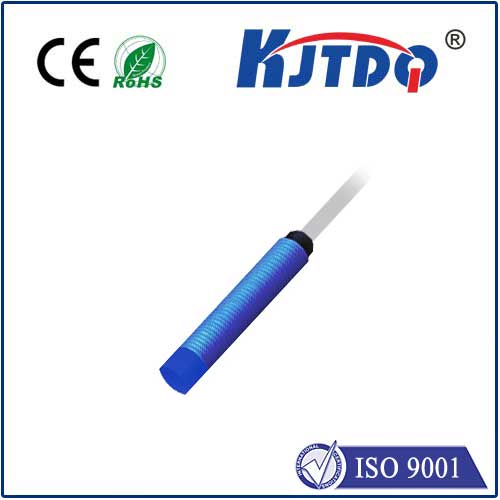Capacitive proximity switch is a sensor that senses the presence or position of an object by detecting changes in its capacitance. Due to its sensitive sensing ability towards various materials (including metals, non metals, liquids, etc.), it has been widely used in various fields such as industrial automation, home appliance control, and material detection.

Main purpose:
Material testing:
- On industrial production lines, capacitive proximity switches can be used to detect the presence or absence of materials, liquid level height, etc. For example, in the packaging industry, liquid can be detected inside packaging bottles, or in the food processing industry, the presence of materials on production lines can be detected.
Position control and detection:
- Capacitive proximity switches are commonly used to detect the position of mechanical equipment components, ensuring that the equipment operates according to predetermined paths or steps. It is used in automation equipment to control the movement of components or detect the endpoint position.
Liquid level monitoring:
- Capacitive proximity switches can sense the presence of liquids and are therefore commonly used in liquid level monitoring systems, such as water tank level monitoring, oil tank level control, etc. When the liquid level reaches the set value, the switch can automatically control the opening and closing of the pump.
Packaging and filling inspection:
- In automated packaging equipment, capacitive proximity switches can be used to detect whether packaging materials are in place or whether liquid or powder reaches the predetermined amount during the filling process, ensuring product quality and production efficiency.
Non contact buttons or control panels:
- In household appliances and electronic devices, capacitive proximity switches can be used as non-contact buttons to control device switching or operation, reduce mechanical wear and improve product lifespan.
Testing in explosion-proof environments:
- In some explosion-proof situations, capacitive proximity switches can be used to detect objects or liquids in hazardous areas, and are widely used in industries such as petrochemicals and chemical engineering because they do not require direct contact.
Examples of application scenarios:
- automatic production lineUsed to detect the presence or location of products on the production line.
- level controlIn water treatment systems, capacitive proximity switches can detect the liquid level height of the water tank.
- Home appliance controlCapacitive proximity switches can be used for non-contact control panels in microwave ovens or induction cookers.
Advantages of capacitive proximity switches:
- Multi material testingCapable of detecting both metallic and non-metallic materials.
- Non contact detectionReduce wear and maintenance, and extend equipment lifespan.
- high sensitivityCan detect very small objects or liquid level changes.
matters needing attention:
- The installation position of the capacitor proximity switch should avoid strong electromagnetic interference sources.
- In damp or dusty environments, regular cleaning is necessary to ensure detection accuracy.
By using capacitive proximity switches, efficient automation control and detection can be achieved, improving production efficiency and reducing manual intervention.
Related Q&A FAQs:
1. How to adjust the sensing distance of a capacitive proximity switch?
Users may be concerned about how to adjust the sensing distance of the capacitor proximity switch according to different application scenarios to ensure accurate detection.
2. What is the difference between capacitive proximity switch and inductive proximity switch?
Users may compare the working principles, application ranges, advantages and disadvantages of capacitive proximity switches and inductive proximity switches to choose a more suitable sensor.
3. Can capacitive proximity switches function properly in high-temperature environments?
Users may want to know the performance of capacitive proximity switches in high temperature or other extreme environments, as well as whether there are special models that can withstand high temperatures.
